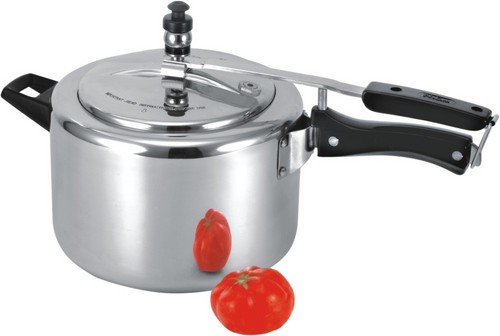<p style="text-align: justify;">The chef is the master of the kitchen. He is the person everybody turns to when they need help in identifying the ingredients, understanding the recipe and also in operating the kitchenware. Of course, the chef must be knowledgeable about everything that can be found in the kitchen, most especially the cooker. The cooker is where the magic happens; without it, the chef would be merely a part of the kitchen itself. It is important, therefore, that he is acquainted with the basic cooker parts.</p>
<p style="text-align: justify;"><img class="aligncenter size-full wp-image-7050" alt="Every Chef Must Know The Basic Cooker Parts" src="https://medusamagazine.com/wp-content/uploads/2013/09/Every-Chef-Must-Know-The-Basic-Cooker-Parts.jpg" width="500" height="336" /></p>
<p style="text-align: justify;">There are different cookers—oven, rice, pressure or gas. These cookers vary in uses because of the demand and usage. Most of these cookers, however, have the same basic parts:</p>
<h3 style="text-align: justify;"><b>1. </b><b>Switch</b></h3>
<p style="text-align: justify;">The switch is a basic part of the cooker. It is fundamentally the key to starting and turning off the cooker. Every chef must know where it is placed in the cooker, because some manufacturers design the cooker in such a way that it cannot be turned on by simply bumping it. It works as a safety feature. Some manufacturers, meanwhile, place the switch on the side of the cooker, covered by a lid. Again, this is to avoid turning it on and off accidentally.</p>
<h3 style="text-align: justify;"><b>2. </b><b>Control Knobs</b></h3>
<p style="text-align: justify;">The control knobs are the ones that control the temperature, the cooking time and even the type of heat that should be applied. The control knobs help the chef manage the recipe. With the control knob, the chef will be able to be in charge of how his cooking will turn out—say for example he is cooking steak. With the use of the control knob, he will be able to determine how the meat will turn out—rare, medium rare or well done. The time and type of heat will establish the platform for cooking.</p>
<h3 style="text-align: justify;"><b>3. </b><b>Thermostat</b></h3>
<p style="text-align: justify;">The thermostat is that part which displays the temperature. It is an important part of every cooker because precision is very significant in cooking, especially baking and roasting. The temperature can either make or break the masterpiece.</p>
<h3 style="text-align: justify;"><b>4. </b><b>Regulator</b></h3>
<p style="text-align: justify;">The regulator is directly connected to the power source. It is a basic part of the cooker in such a way that it determines the voltage in which the cooker must be plugged in. A simple mistake in plugging it in the wrong voltage may cause explosion, or destruction of the cooker itself.</p>
<h3 style="text-align: justify;"><b>5. Motors</b></h3>
<p style="text-align: justify;">The motors run the cooker. There are different types of motors depending on the type of cooker.</p>
<h3 style="text-align: justify;"><b>6. </b><b>Fans</b></h3>
<p style="text-align: justify;">The cooker fan allows the heat to escape. Because of the fans, the cooker will not overheat—keeping the kitchen and everybody in it safe.</p>
<h3 style="text-align: justify;"><b>7. </b><b>Rings, Hotplates and Trays</b></h3>
<p style="text-align: justify;">These three parts are not always present altogether—because again, it depends on the type of cooker. There are cookers which only have rings and hotplates, while the tray is essential in over cookers. These allow the heat to flow through the food, without burning it. It regulates the amount of heat that the food received while it is cooking.</p>
<p style="text-align: justify;">These are the basic cooker parts that a chef must know. There are schools that teach this as part of the curriculum because not only will it add to the chef’s abilities; it will also keep the kitchen safer.</p>
<p style="text-align: justify;"><strong><em>About Mellisa</em></strong></p>
<p style="text-align: justify;">Mellisa is a part time blogger and a home maker,she loves to blog about Kitchen DIY tips and how to take care of Kitchen Appliances. She recently ordered beko cooker parts from spare 4 appliances and thinks ordering online is really hassle free if you get the right supplier.</p>

Every Chef Must Know The Basic Cooker Parts
